Why 2022 was a bigger year for Web3 than 2021
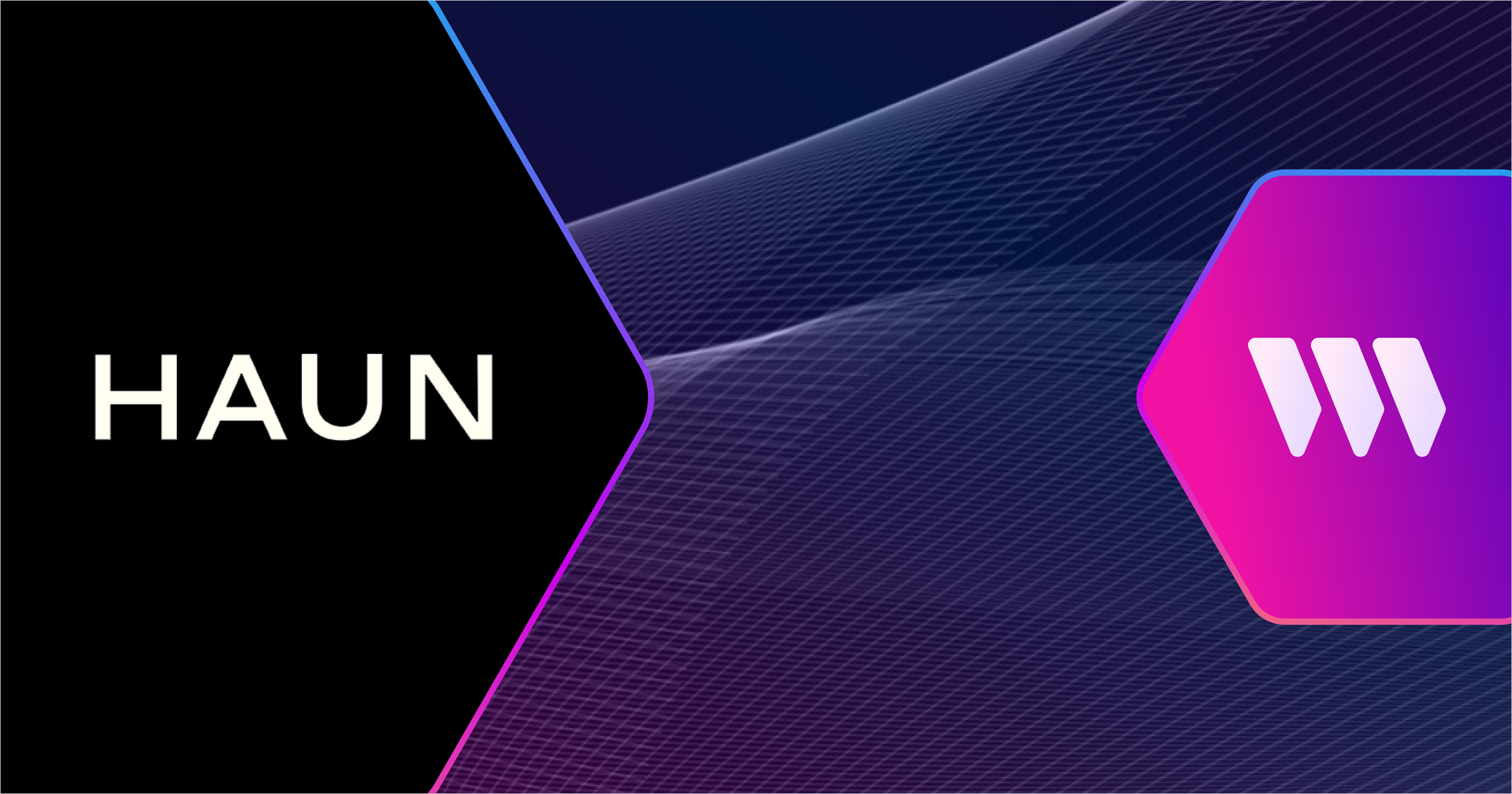
by Haun Ventures and thirdweb
The Year in Web3: 2022
This year has been a tumultuous one for crypto — and with recent events plaguing the entire industry, it’s no surprise that many are writing 2022 off as a net negative year for web3. In many ways, that’s understandable: this year saw market prices free-falling, companies cutting costs & laying off tens of thousands, and the multiple headline-driving implosions of crypto-adjacent companies — affected by the unprecedented collapse of FTX.
But as builders in web3, we can look back at this year and see the multitude of technical breakthroughs propelling the industry forward. Just as the 2018 down market produced now household categories like decentralized finance and NFTs, the teams at thirdweb and Haun Ventures share the view that 2022 will, in hindsight, be viewed as a time of accelerating innovation in the web3 technical stack that are priming these products for the mainstream. This year also included a handful of examples where organizations outside of crypto started to recognize the value of experimenting with web3 strategies for their business and brand.
This year has not been easy. But the silver lining is that when things get difficult in our industry, those who are committed to building real value and utility get to focus and ship without the distraction of hype and speculation. In our experience, it’s usually in these moments, when sentiment all around us couldn’t feel worse, that the green shoots of what’s to come start to reveal themselves.
One of the very few benefits of the bear market was that we started to see the true separation of crypto from Web3. Whilst many people still conflate volatile, speculative financial trading with the greater mission of ‘Web3’, it’s clear that there is a separation between those who used the momentum of 2021 as an opportunity to build short-term wealth, and those who recognised the opportunity to build a better version of the internet.
We believe now is a good time to take a step back to redefine Web3 and examine why in 2022 we made more progress towards realizing this vision than the delirious days of 2021.
Building a Better Internet: Web2 vs. Web3
The web as we know it today is built with a simple client-server model, where the client is typically a device or program that sends a request to a server and the server is a computer or program that receives the request and responds with the requested information or service. A common example of this is a web browser (the client) sending a request to a website's server to access a webpage. The server then responds by sending the webpage back to the browser.
In the current model, there is a clear divide between the client and the server, with the server being private and controlled by a company or organization and the client being owned by the user:
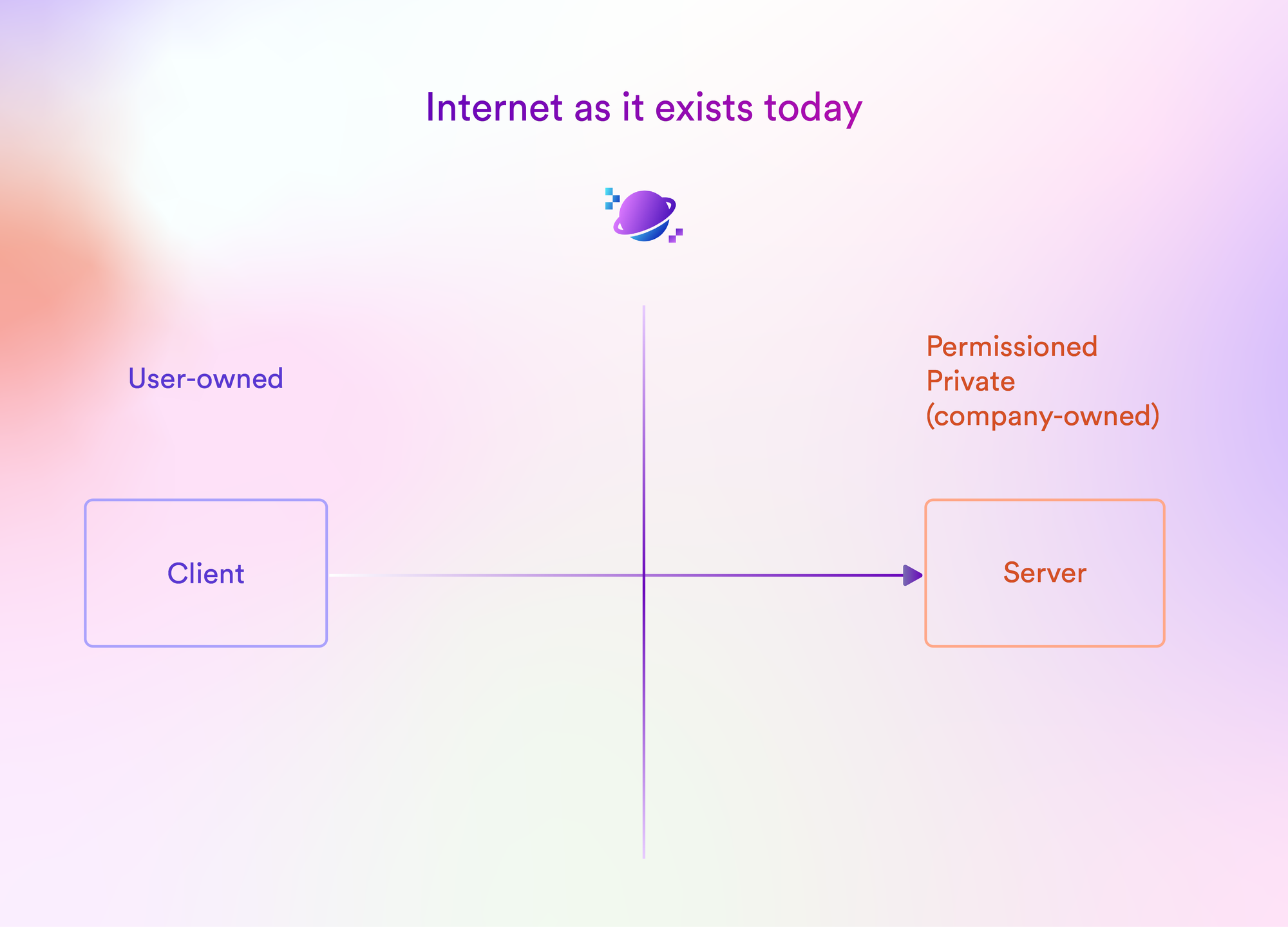
Web3 brings a different interaction model. Instead of connecting to private servers we now have public backends (blockchains, storage networks and other decentralized networks.) In contrast to the traditional client-server model, where the client sends a request to a private server, the client in this model can send a request to a public backend. This means that the server is not owned and controlled by a specific company or organization, but is instead available and visible to anyone.
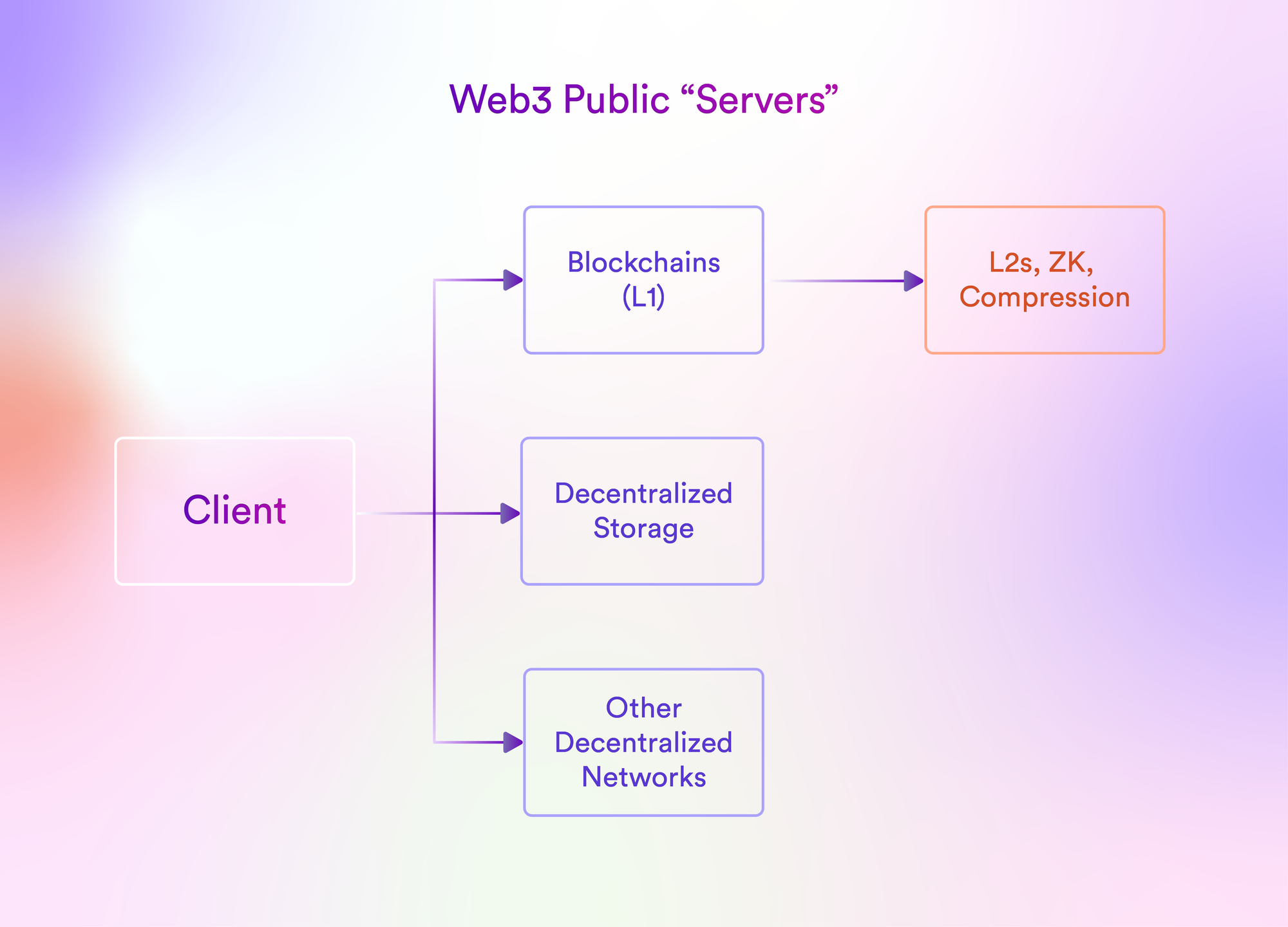
This year we have started to see the risks of building our web on privately-owned, controlled servers play out. Elon Musk’s turbulent Twitter reign has reminded us that there is no guarantee that the audiences we build and the content we create will exist tomorrow. Journalists found their accounts deactivated overnight based on flippant policy making of which they had no prior warning of.
These practices push us closer towards the need for decentralised, public backends which power the networks and services we use to communicate. In 2022, we finally saw a number of internet products gain traction which align with this world view.
Mirror, for example, is a decentralized publishing platform which saw significant growth this year. The service allows anybody to permissionlessly publish writing which is minted on chain and uses decentralized storage, ensuring that no centralized entity can decide to remove or alter it in any way.
The platform also introduced creator monetisation tools in the form of in-article NFT drops, which don’t involve an intermediary taking a percentage of the revenue like Web2 creator monetisation tools. The tool, powered by thirdweb’s smart contracts, is an important case study on how Web3 content publishing and monetisation can work together to create powerful opportunities for creators to make a living directly from the audiences they build, without a middle-man interfering.
Web3 social networks have also seen significant traction. Platforms like Orb and Farcaster, which aim to displace the likes of Twitter, have seen their users and activity explode.
orb has crossed 100k+ posts including comments and mirrors/reposts!
— nilesh.lens (@nileshrathoree) December 22, 2022
90k+ follows
200k+ likes
95% of the activity is in the last 60 days only! pic.twitter.com/zuoatcilaw
It’s important to remember that when we think of the suite of internet products which we use every day, finance is only a very small category. Art, entertainment, social media, publishing and online shopping play a much bigger role in our lives, and it’s therefore these categories which we should be paying the most attention to when it comes to measuring the success of Web3’s disruption.
For these applications to achieve mass adoption, the technology must evolve so that it can support tens of millions of users simultaneously and displace the services they’re already using. In 2022, developers made significant leaps forward towards achieving this level of maturity. We think it’s important to highlight and celebrate these moments, so we’ve broken down the five biggest technological milestones of the last 12 months:
The Merge
The Ethereum merge, which took place in September 2022, was a major update to the Ethereum blockchain that improved its scalability, security, and sustainability. It was widely regarded as the most significant blockchain event of the year.
The merge involved the transition from the current Ethereum proof-of-work (PoW) consensus algorithm to a proof-of-stake (PoS) algorithm, which allows users to "stake" their Ether (ETH) to participate in the validation of transactions.
Proof of stake implements randomly chosen validators to make sure a transaction is reliable, as opposed to having them compete to solve a mathematical puzzle, like the proof-of-work consensus mechanism.
A Proof-of-stake consensus mechanism means the network no longer favors computing power to determine which miner validates a transaction - This optimization decreased the energy consumption of the Ethereum network by 99.8%, higher than the predicted 98.5%. This was a massive win for Web3, as energy consumption and environmental impact was one of the biggest criticisms of the technology.
Ethereum now has a clear path to scalability without the danger of emitting dangerous amounts of carbon as the network grows.
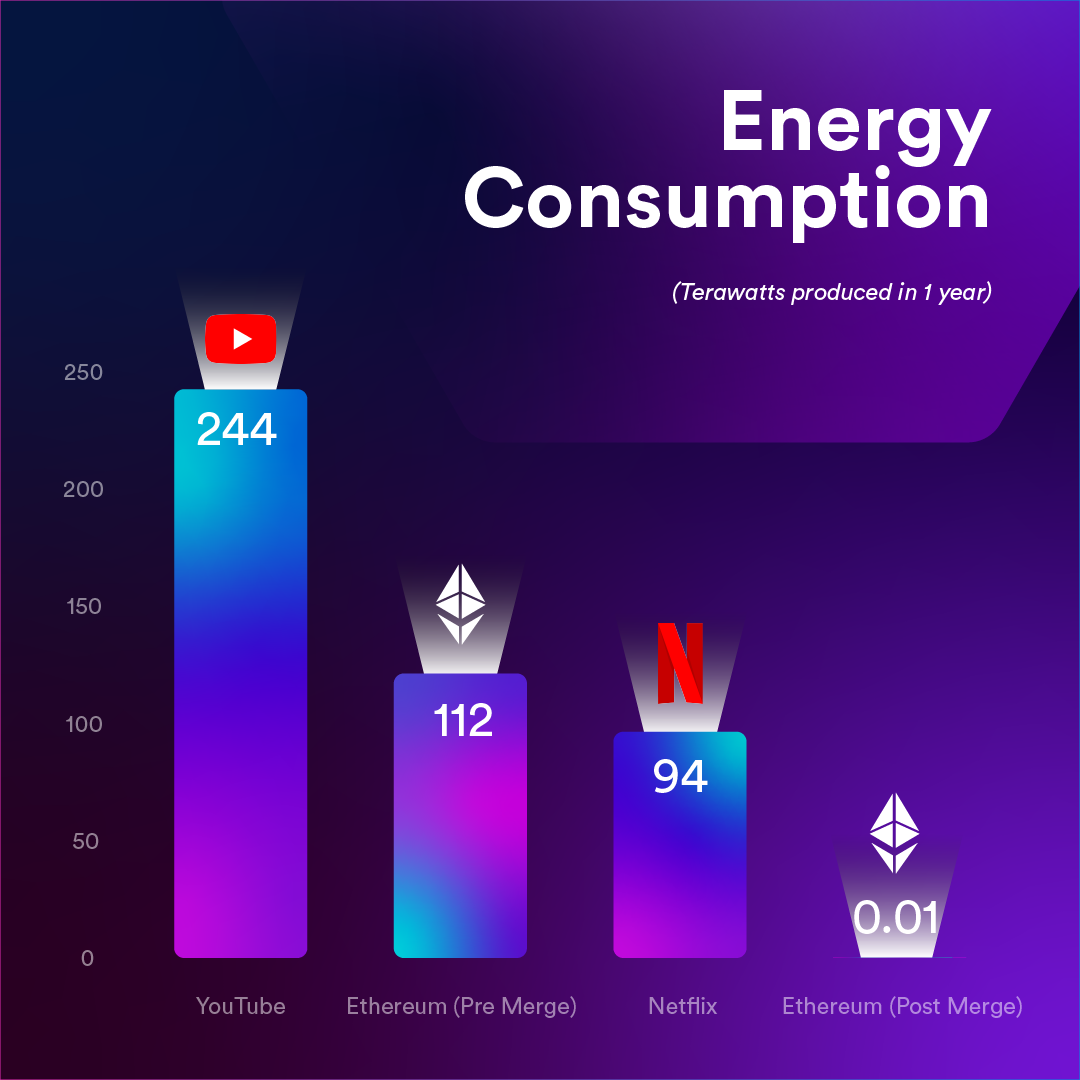
Optimistic Layer 2 networks are gaining traction
Adoption of Layer 2 blockchains surged in 2022, especially the two leading optimistic Layer 2 solutions Optimism and Arbitrum. The TLV (total locked value) of the largest layer 2 protocols grew from $50 Million to a high of $7 billion in 2022, and in December Arbitrum was the fifth largest blockchain in Daily Active Users.
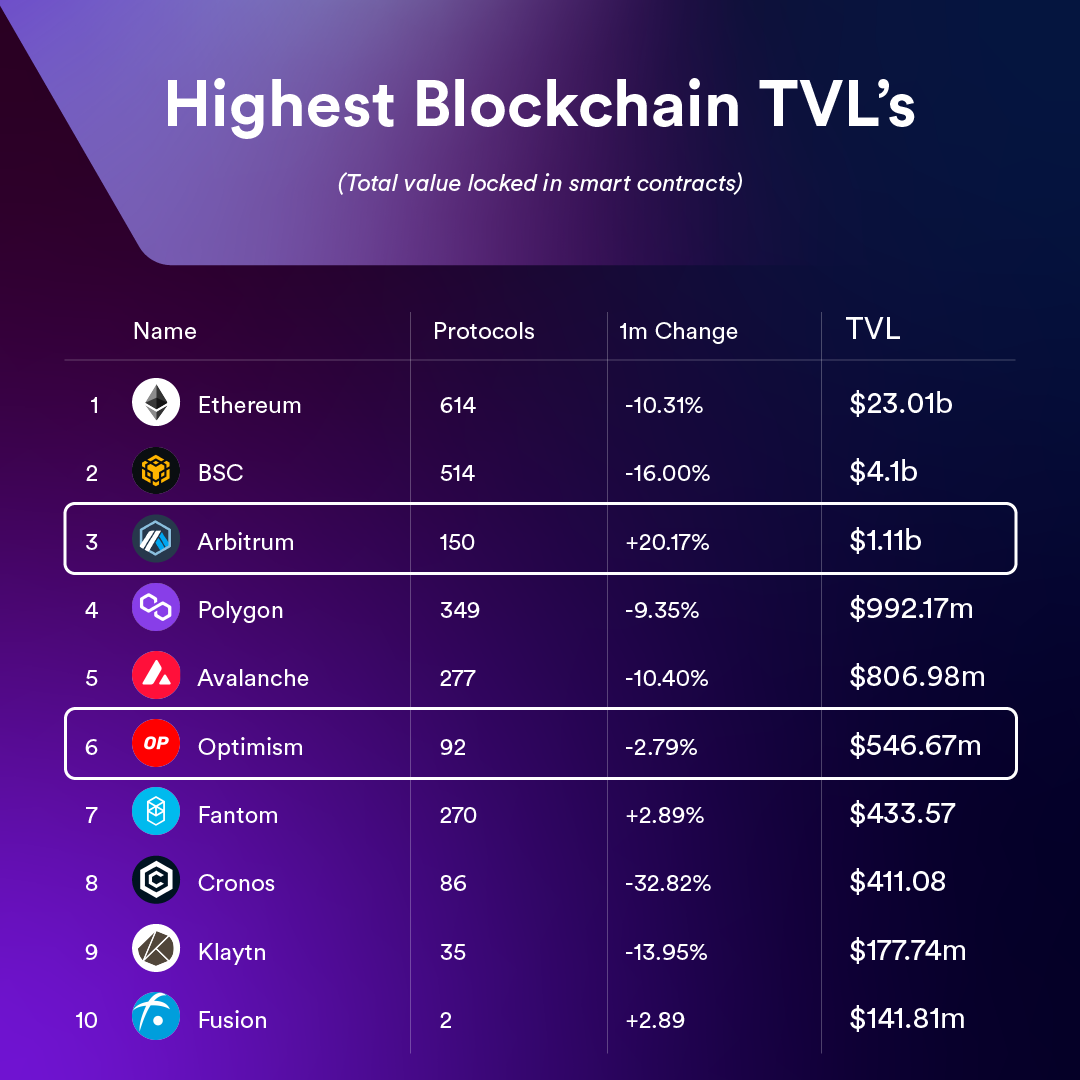
Layer 2 solutions work by moving some of the processing and storage requirements for transactions off the main Ethereum blockchain, or "layer 1," and onto a separate, parallel layer. This can free up capacity on the main Ethereum blockchain and allow it to process more transactions simultaneously.
This surge in growth is a promising indication that Layer 2 blockchains will serve as a valuable solution to Ethereum’s scaling problems, enabling Web3 applications which can handle high volumes of users and transactions. Industries such as Defi and gaming are already benefiting from the lightning fast transaction speeds and ultra-low gas costs of the networks.
Impressive growth has coincided with some significant development milestones, particularly with Zero-Knowledge proof technology (More on that next.)
Leaps forward with Zero-Knowledge Proofs & zkEVM
In July, Polygon announced the launch of zkEVM, a layer 2 scaling solution which uses Zero Knowledge Proof technology to validate transactions. The announcement celebrated one of several milestones in Zero Knowledge development this year, with teams like Aleo and Starkware also announcing breakthroughs.
Many have hailed Zero Knowledge Proof as one of the most important developments in crypto which will unlock advancements in both privacy and security.
A zero-knowledge proof is a method by which one party (the prover) can prove to another party (the verifier) that a statement is true, without revealing any information about the statement itself. This is useful in situations where the prover wants to prove something to the verifier without revealing the actual information, either for privacy reasons or to protect the information from being tampered with.
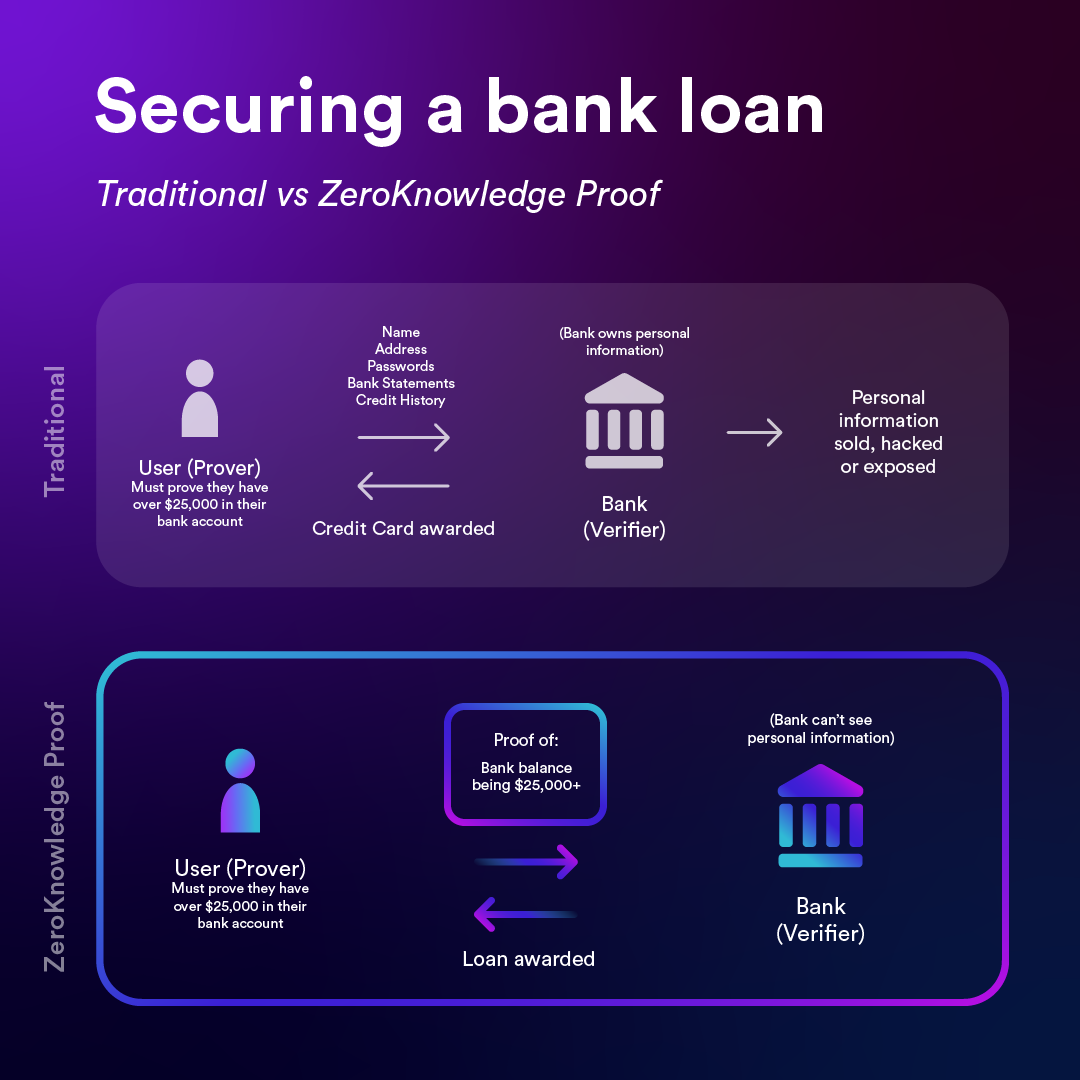
In crypto, zero-knowledge proofs can be used to validate transactions on a blockchain without revealing the specifics of the transaction. For example, a prover could use a zero-knowledge proof to prove to the verifier that they own a certain amount of cryptocurrency, without revealing the specific addresses or amounts involved. This can help protect the privacy of users, as the specifics of their transactions are not publicly disclosed.
Bear markets are great times to contemplate the true value of crypto and Web3. It’s becoming increasingly clear that having greater control over our personal information online is one of Web3’s most attractive premises. Zero Knowledge Proof tech gives users power to decide what data we share and with whom, which will bring in the next great migration of users to Web3, and further, weaken Web2-based networks.
Polygon onboarding the biggest brands in the world onto Web3
If 2021 was a year of delirious experimentation with sky-high prices and instant 10k PFP sell-outs, 2022 was the year of real world application for Web3. Over the last 12 months the biggest brands in the world have started to explore how Web3 can become a meaningful part of their business strategy.
Mass adoption for crypto will be ushered in by the worlds biggest brands who know how to build great products for their customers. Their customers are not crypto-native, and they don’t need to be. They just want technology which works.
Polygon led the way in onboarding some of the world’s biggest brands onto Web3: Reddit, Nike and Starbucks bolstered Polygon’s already impressive ecosystem. Most notably was Reddit who launched their avatar collectible marketplace to the tune of over 2.5 million unique users purchasing NFTs in just three months - more than Opensea.
Reddit’s launch was a triumph for user experience in Web3. Anyone who has tried to mint an NFT or even purchase one from a secondary marketplace will know that the process is clunky and complex. Reddit simplified the user experience and abstracted away the blockchain infrastructure, making it user friendly for just about anyone.
Reddit just onboarded 3 million non-crypto native users onto Web3.
— thirdweb (@thirdweb) October 25, 2022
Their collectible avatars were built with a seamless user experience using a combination of powerful UX tools.
Here's what their launch can teach us about building Web3 apps that achieve mass adoption.
🧵
Furthermore, Polygon continues to be the chain of choice for developers building large-scale applications. In December, developer platform thirdweb reports over 300k unique transactions were made on Polygon contracts, higher than any other blockchain supported by the platform.
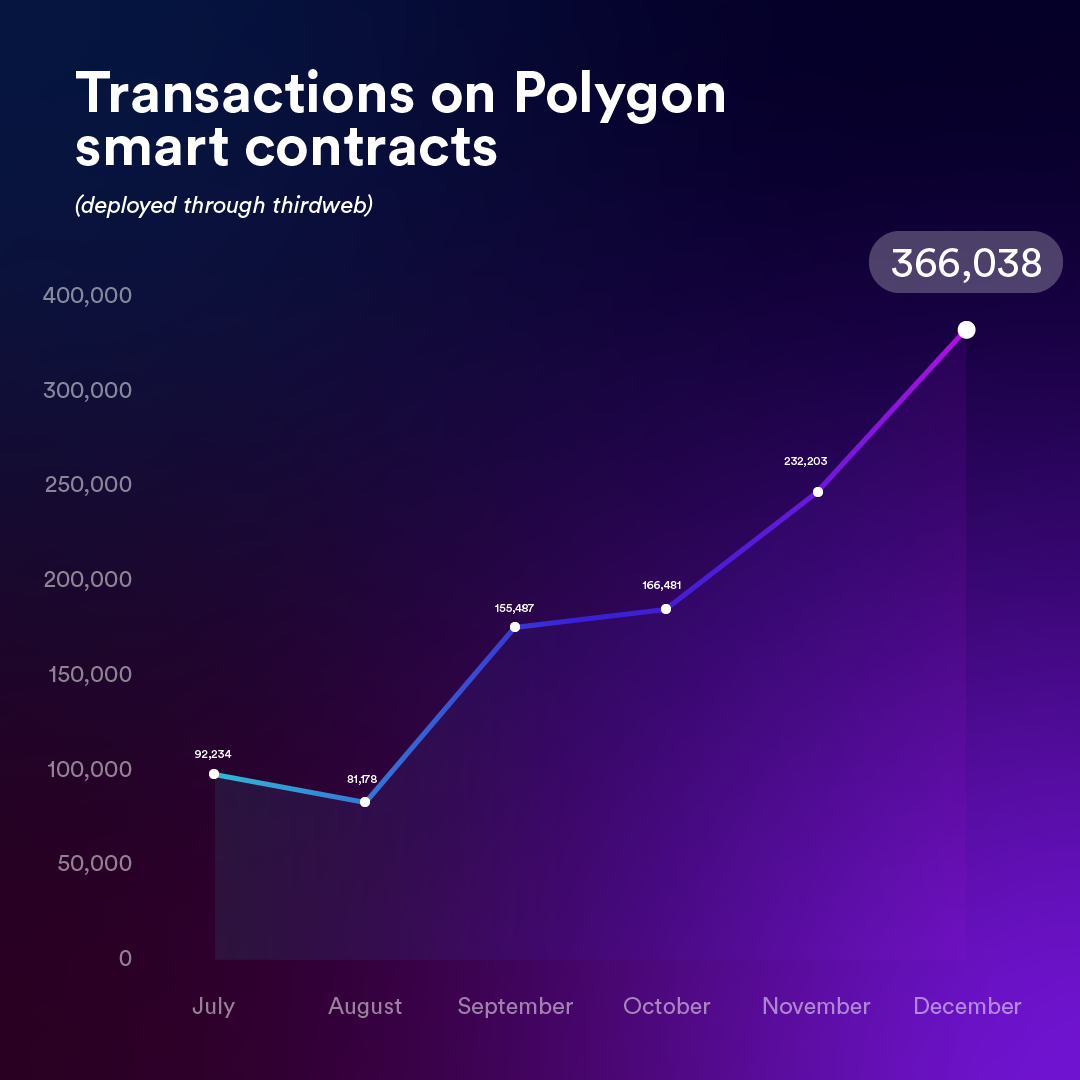
Conclusion
There has never been a better time to be a builder in web3. A slow market means fewer distractions, fewer bad actors and ample opportunity to lazer focus on building the next generation of the internet.
The technological progress which was made this year will lay the foundations for applications which will provide real world value and bring Web3 to the masses.
If you’d like to explore how Web3 technology can transform your business, reach out to the thirdweb team.

